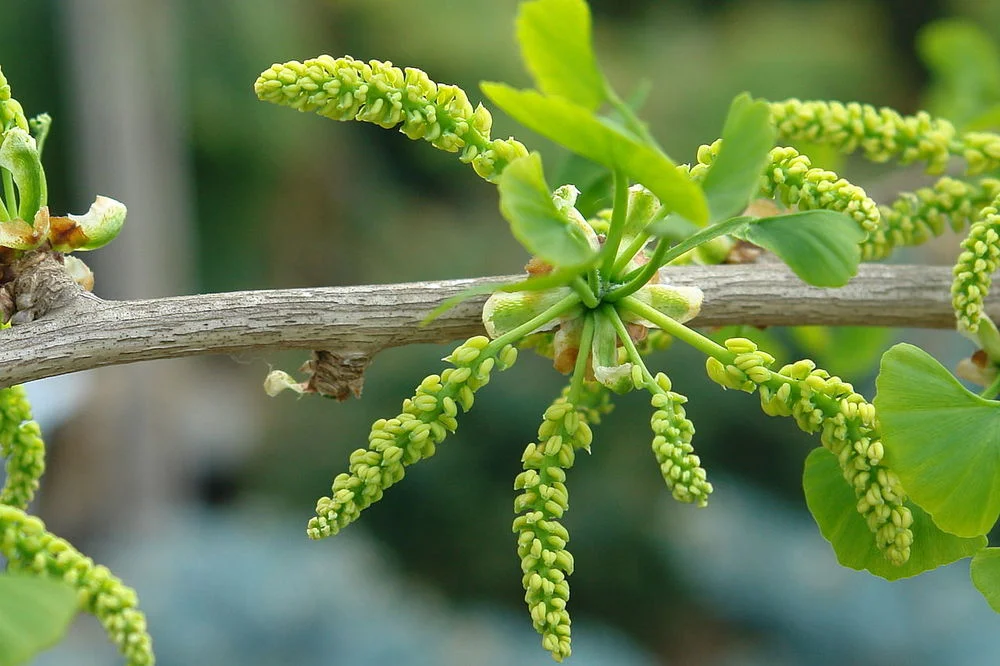The recent rains in California mean good news for drought-stricken cities and landscapes. But the sunshine that follows, and the trees and shrubs that will soon be in full bloom, can mean bad news for allergy sufferers - whose numbers continue to rise especially among children.
In some interesting research on urban landscapes, horticulturist Tom Ogren has identified one major culprit, botanical sexism. He explains his findings:
Pollen on a male Gingko Biloba tree
“[I]n the name of tidiness, for the cause of low maintenance, male trees and shrubs were being planted by the millions. Since males produced no seeds, fruits, messy flowers or old seedpods, they were considered far superior to female plants. That these same male plants would plague urban areas with huge amounts of allergenic pollen never seems to have been considered. But of course, this is exactly what has happened.” – From “Gardening with Allergies”
What can landscapers and green building professionals do (these plants are often located outside open windows afterall) to counter this trend? This is where OPALS (Ogren Plant Allergy Scale) comes in, Ogren’s tool for selecting plants with low allergenicity. Now used by the USDA and other research institutions, the scale provides ratings from 1 to 10 for hundreds of species – sometimes separately for males and females of a species.
Armed with this data, landscapers and home gardeners are one step closer to creating allergy-free environments for all to enjoy at schools, offices, and homes.


